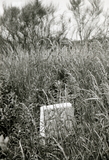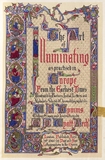|
Quick Search
|
Search Results
You searched for: More Like: 'Forestgait: the gentle revolution'
12 items
items as
Memorial to Ann Allardyce
1290 Memorial to Ann Allardyce in the West Church of St. Nicholas. The inscription reads, "Sacred to the memory of Ann the wife of Alexander Allardyce of Dunnottar and daughter of Alexander Baxter of Glassel. She was married the 7 August 1786, gave birth to her son Alex Baxter Allardyce the 28th of July and departed this life at Aberdeen the 1st of August 1787 aged 28 years. As a tribute justly due to the Eminent Virtues, Gentle Manners and Personal Accomplishments of a most amiable Woman her disconsolate husband dedicates this monument". John Bacon, London, sculptor 1791. March Stone 26
3208 This stone is located at the confluence of Brodiach and Silver Burns. Access is best achieved from Brotherfield Farm. The line of the marches has headed west from number 25. This stone is marked "26 ABD".
The Brodiach has flown here from the north and can be followed through the lands between Westhill, on the west, and Kingswells to the east. Stone number 28 also sits on the burn.
This stone marks the south west corner of the Freedom Lands. The boundary has travelled west, a west-south-westerly curve, from the Ferryhill Burn at the River Dee to this point and will now head north, with gentle zig-zag, to the Doupin' stone, number 31, at Wynford Farm.
In 1698 it was noted that there had never been a march stone here but the location had always been pointed out on ridings. A stone was recommended in 1780.
A slide of this image was kindly lent to Aberdeen City Libraries by Colin Johnston so that we could create a digital copy for public use.
The image was taken in the early 1980s when Colin worked as a teacher at Bridge of Don Academy. He led several current and former pupils, and staff members in an investigation into the location, physical condition and public knowledge of Aberdeen's historic boundary markers. Memorial to Ann Allardyce
116 Memorial to Ann Allardyce in the West Church of St. Nicholas. The inscription reads, "Sacred to the memory of Ann the wife of Alexander Allardyce of Dunnottar and daughter of Alexander Baxter of Glassel. She was married the 7 August 1786, gave birth to her son Alex Baxter Allardyce the 28th of July and departed this life at Aberdeen the 1st of August 1787 aged 28 years. As a tribute justly due to the Eminent Virtues, Gentle Manners and Personal Accomplishments of a most amiable Woman her disconsolate husband dedicates this monument". John Bacon, London, sculptor 1791. Treasure 106: The Art of Illuminating
327 To further help celebrate the year of History, Heritage and Archaeology, we have on display this month some beautifully illustrated Victorian guides to medieval manuscript illumination:
- "The Art of Illuminating As Practiced in Europe from the Earliest Times." Selected & Chromolithographed by W. R. Tymms. With an Essay and Instructions by M. D. Wyatt Architect. (1860)
- "The Art of Illumination and Missal Painting. A Guide to Modern Illuminators". By H. Noel Humphreys. (1849)
- "Lessons in the Art of Illuminating. With Practical Instructions, And a Sketch of the History of the Art". By W. J. Loftie, B.A, F.S.A (1895)
One of the most iconic of all "Victorian" styles is that of the Gothic Revival. The idealistic and romantic ideas of chivalry, courage, modesty and beauty appealed to Victorian sensibilities. Furthermore, the rose-tinted notion of the Middle Ages as being an age of pastoral charm with knights in shining armour and damsels in distress, all cocooned in a nicely packaged and organised feudal system, served as an antidote to the rapid expansion and technological advances brought on by the Industrial Revolution. The new found interest in the study of medieval illuminated manuscripts was a consequence of this feeling, and as such we see a number of guides to and facsimiles of medieval manuscripts in the latter half of the 19th century.
To see some more beautiful examples of illuminated manuscript illustration, have a look at our online exhibition on the interactive screens. |


















